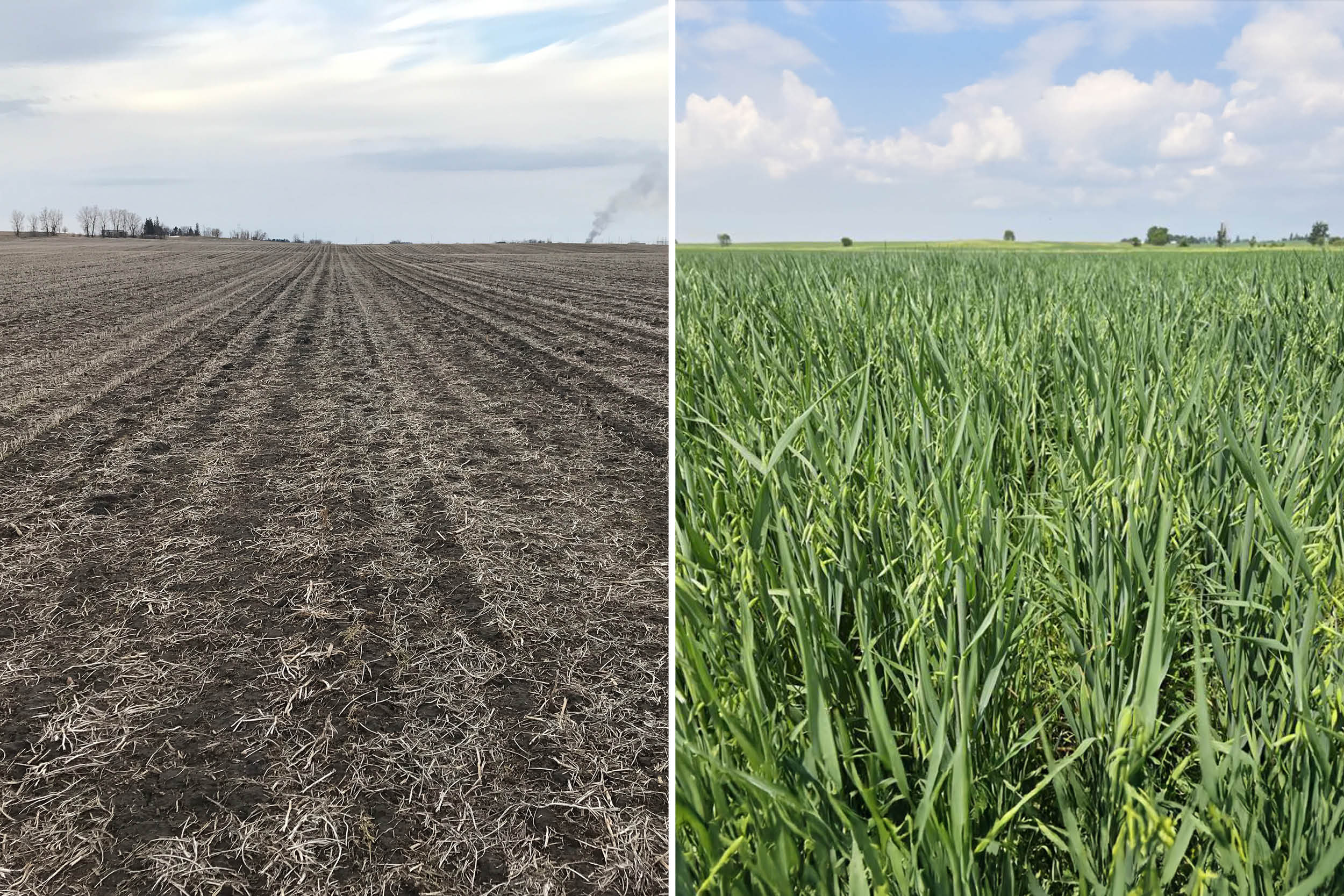Options Following Winterkilled Small Grains
By Margaret Smith, PhD
Albert Lea Seed Forage Agronomist
A dry fall and tough winter—with intermittent, extremely cold snaps between warmer periods—have led to substantial winterkill of small grain stands in parts of the Upper Midwest. Once you’ve evaluated your winter small grain fields (see Did Your Small Grains Survive the Winter? Evaluation and Next Steps), what are your options?
Keeping Your Rotation Sequence
It’s good to keep small grains in your rotation. Organic growers are particularly reluctant to mess with their standing rotational sequence. It continues to disrupt farm plans for several years. Though organic system plans have already been submitted (in March for most certifying agencies), certifiers are flexible about accommodating issues that destroy crops. They are usually willing to accept changes in the current year’s cropping systems plan. Call your certifier, though, for preapproval to change your plans. Better to avoid surprises later in the year at the time of your organic inspection
Stands of less than 50% (fewer that 7 plants per ft of row in 7.5 rows) need to be terminated with plans made for an alternate crop.
Changing Small Grain Species
The planting window is still available to get spring small grains into the ground. Terminating with tillage is faster than chemical termination and can usually be accomplished with a shallow, fast pass or two. If you’re thinking of planting oats for a food market, be especially careful if following winter wheat, barley, or rye. Winter wheat is the biggest concern, but any contamination with these grains—produced by “escaped” plants—could result in rejection of food-grade oats destined for low-gluten or gluten-free markets.
Terminating your winter grain and planting the spring version afterward helps avoid cross species contamination in the harvested grain.
Interseeding?
There may be a temptation to interseed a spring version of the winter small grain, but resist the temptation; it’s not a good idea! The surviving winter plants will mature before the spring planted counterparts—up to three weeks earlier depending on varieties. Triticale or barley for forage might be an exception to this rule. Differences in maturity for forage harvest may not be important to some farmers in some farming/feeding systems. But, a uniform, consistent stand of small grains or small grains with forage peas makes harvest and drying much easier than a stand of mixed maturities.
Tweaking Spring Seeding Rates
Suggested seeding rates for small grains for grain harvest are slightly higher than for their winter counterparts. For small grains, there is less time for tillering when spring planting, so you need to start with a slightly higher rate to achieve an economic optimum number of seed heads. Target spring seeding rates for grain production without an underseeding are listed below. These rates take into account average germination rates and a 10% “fail to establish” allowance, typically observed in U.S. small grain plantings:
| SPRING GRAIN | TARGET STAND (PLANTS/ACRE) | PLANTING RATE (SEEDS/ACRE) | PLANTING RATE (LBS/ACRE) |
|---|---|---|---|
| Oats | 1.25 - 1.3 million | ~1.5 million | 112 - 128 |
| Wheat | 1.3 - 1.4 million | ~1.6 - 1.7 million | 115 - 135 |
| Triticale | 1.3 million | ~1.6 million | 100 - 120 |
| Barley (2-Row)* | 1.25 - 1.3 million | ~1.5 million | 163 |
| Barley (6-Row) | 1.25 - 1.3 million | ~1.5 million | 110 |
*2-row barley has larger seeds than 6-row barley
If spring planting is delayed past the optimum seeding date for small grains (see: When is it Too Late to Plant Oats, Wheat or Barley?), the number of tillers produced will be reduced. Increase target stands by one percent per day of delay up to a target of 1.6 million plants/A. Divide by a factor of 0.85 to get your seed drop rate.
Switching to a Crop Other than a Small Grain
If your small grain was “winter terminated” or you terminate the partial spring growth with tillage or herbicides, the path is clear to plant corn, soybeans, dry beans, alfalfa or annual forage grasses.
If you applied N last fall, some was taken up by fall growth, but with no uptake from spring thaw to new crop emergence and uptake, and depending on rainfall, you can expect some N loss to leaching. How much is extremely difficult to estimate. A conservative approach is to not take full credit for your fall N application.
___
Resources:
- Did Your Small Grains Survive the Winter? Evaluation and Next Steps, Albert Lea Seed
- Planting Small Grains, University of Minnesota
- When is it Too Late to Plant Oats, Wheat, or Barley? Management Considerations for Late-Planted Small Grains in 2023, Albert Lea Seed
